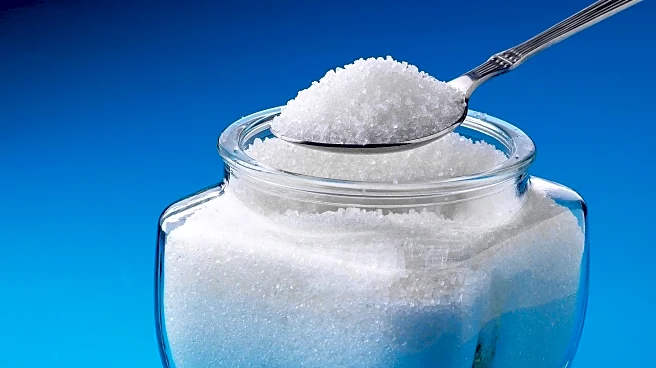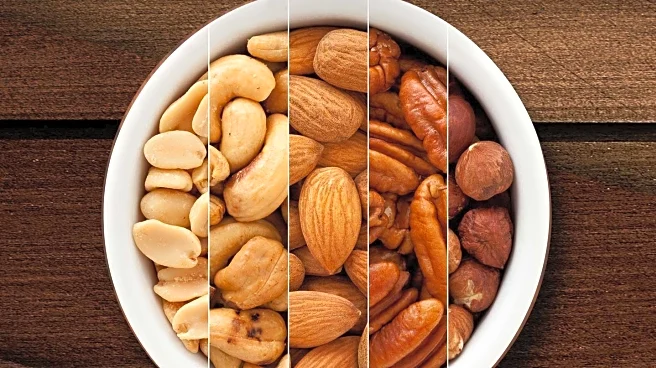What's Happening?
Recent studies have raised concerns about the long-term health effects of sugar substitutes, particularly for individuals with Type 2 diabetes. While these substitutes, including aspartame and sucralose, have been recommended to avoid blood sugar spikes, emerging evidence suggests they may worsen glucose regulation and increase the risk of Type 2 diabetes. The World Health Organization has advised against non-sugar sweeteners for weight loss, citing potential risks of heart disease and early death. The CARDIA study found that high intake of diet beverages and sugar substitutes was linked to greater body mass and waist circumference, predictors of insulin resistance.
Why It's Important?
The findings challenge the assumption that sugar substitutes are a healthy alternative to sugar, particularly for diabetes management. As the use of these substitutes in ultra-processed foods rises, understanding their impact on health becomes crucial. The research suggests that focusing on whole foods rather than processed options may be more beneficial for managing diabetes and overall health. This could influence dietary recommendations and public health strategies, emphasizing the importance of balanced diets over reliance on sugar substitutes.
What's Next?
Further research is needed to clarify the causal relationships between sugar substitutes and health outcomes. Public health guidelines may evolve to recommend minimizing the use of non-sugar sweeteners, promoting whole foods and natural alternatives. Individuals with diabetes may be advised to consult dietitians for personalized dietary plans that prioritize whole foods and balanced nutrition.
Beyond the Headlines
The debate over sugar substitutes highlights broader concerns about ultra-processed foods and their impact on health. As dietary habits shift, understanding the complex interactions between food components and health outcomes becomes increasingly important. This may lead to a reevaluation of dietary guidelines and increased focus on food quality and nutrient density.











